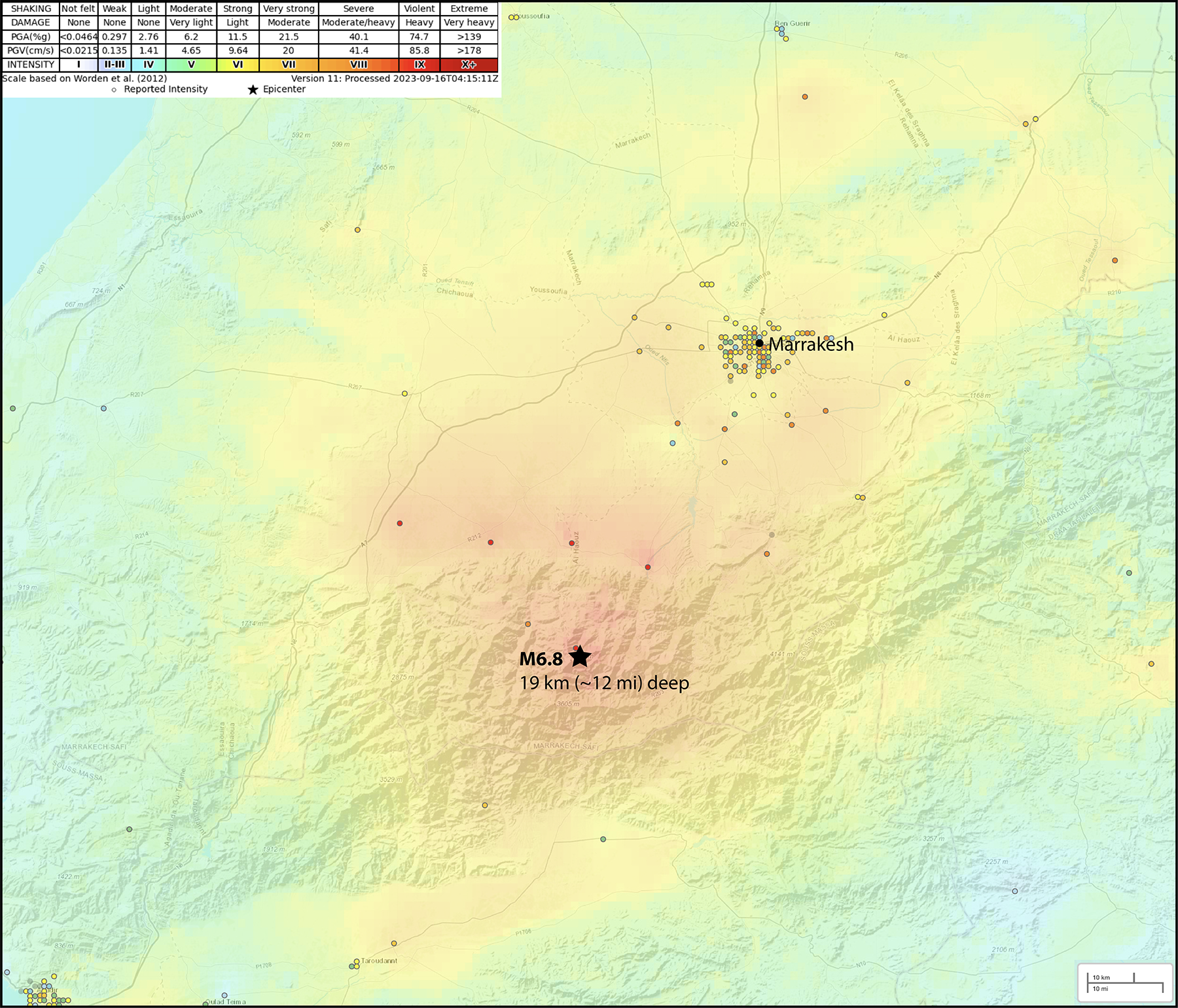

When you live in a seismically active place like Alaska, a devastating earthquake like the recent one in Morocco (see Figure 1) may rightly make you ask, “Could something like that happen here?” The answer is—Yes. And no.
Yes, because Alaska has earthquakes with the same size and rupture style. Fairbanks in particular experienced a strikingly similar earthquake within the last century, and is certainly poised for another sometime in the future.
But also no, mainly because our infrastructure is quite different from Morocco’s.
On October 16, 1947, just 60 miles southwest of Fairbanks, there was an earthquake of very similar magnitude, depth, and rupture style to the recent Morocco event (see Figure 2). The outcome of that magnitude 7.1 quake was quite different, with shaking and minor damage reported, but no deaths. Today, our population density is much greater, and it’s worth evaluating our readiness by being reminded just how damaging earthquakes can be. Spreading awareness helps to build resilience to such natural disasters, which is the Alaska Earthquake Center’s mission.
The September 8, magnitude 6.8 earthquake was about 70 miles southwest of Marrakesh, Morocco’s fourth-largest city with a population of 1 million. The shallower the earthquake, the more intense the shaking and potential damage will be, over a wider region. Because the Morocco earthquake was only about 12 miles (19 kilometers) deep, the shaking was intense—reported as violent with heavy damage at the epicenter, and very strong with moderate damage for 100 miles in all directions.
The earthquake also struck late at night, in a difficult-to-access, mountainous area. Thousands of people died as the shaking flattened their adobe and brick homes. This type of construction is rigid, cracking and collapsing when subjected to strong shaking. Morocco has seismic building codes just like we do, but how those are enforced vary widely, just like here.
The main differences in how much damage a strong earthquake could cause in Fairbanks versus what happened in Morocco are how we build our homes, and our widespread, distributed population. Log cabins and frame houses are not as prone to collapse during strong ground shaking as brick and clay structures, but when they do, pockets remain where people can be trapped but still breathe. The adobe homes in Morocco collapsed into pulverized dust that left no air pockets.
The main features of the Marrakesh Earthquake and the 1947 quake near Fairbanks are eerily similar. Geologically speaking, both Fairbanks and Marrakesh lie hundreds of miles from the closest tectonic plate boundary, where most earthquake activity takes place. The recent Morocco event was in the Atlas Mountains; many notably sized earthquakes in Alaska’s interior are in the Alaska Range.
The depths are also similar—the central Alaska quake was 16 miles (26 kilometers) deep, in the same part of Earth’s crust as the recent Marrakesh event.
Large, shallow earthquakes in mountains likely arise from the same type of process. The northern edge of Morocco is at a convergent boundary, where the African and Eurasian plates move toward each other. Southern Alaska is also at a convergent boundary, where the Pacific and North America plates smash slowly together. We should always remember, even hundreds of miles from an active plate boundary, that convergent stress will be released in large earthquakes every so often.
The last big earthquake in this part of Morocco was in 1960, and although it was smaller (magnitude 5.9), it was the most destructive in Morocco’s history. When decades elapse between large earthquakes, people can forget that they live in a region with the potential for significant shaking.
At the Alaska Earthquake Center, we are on watch for Alaska 24–7, with a seismologist always on duty. We provide crucial information about earthquake locations and magnitudes to better understand the seismic potential across Alaska, and to support local emergency responders.

